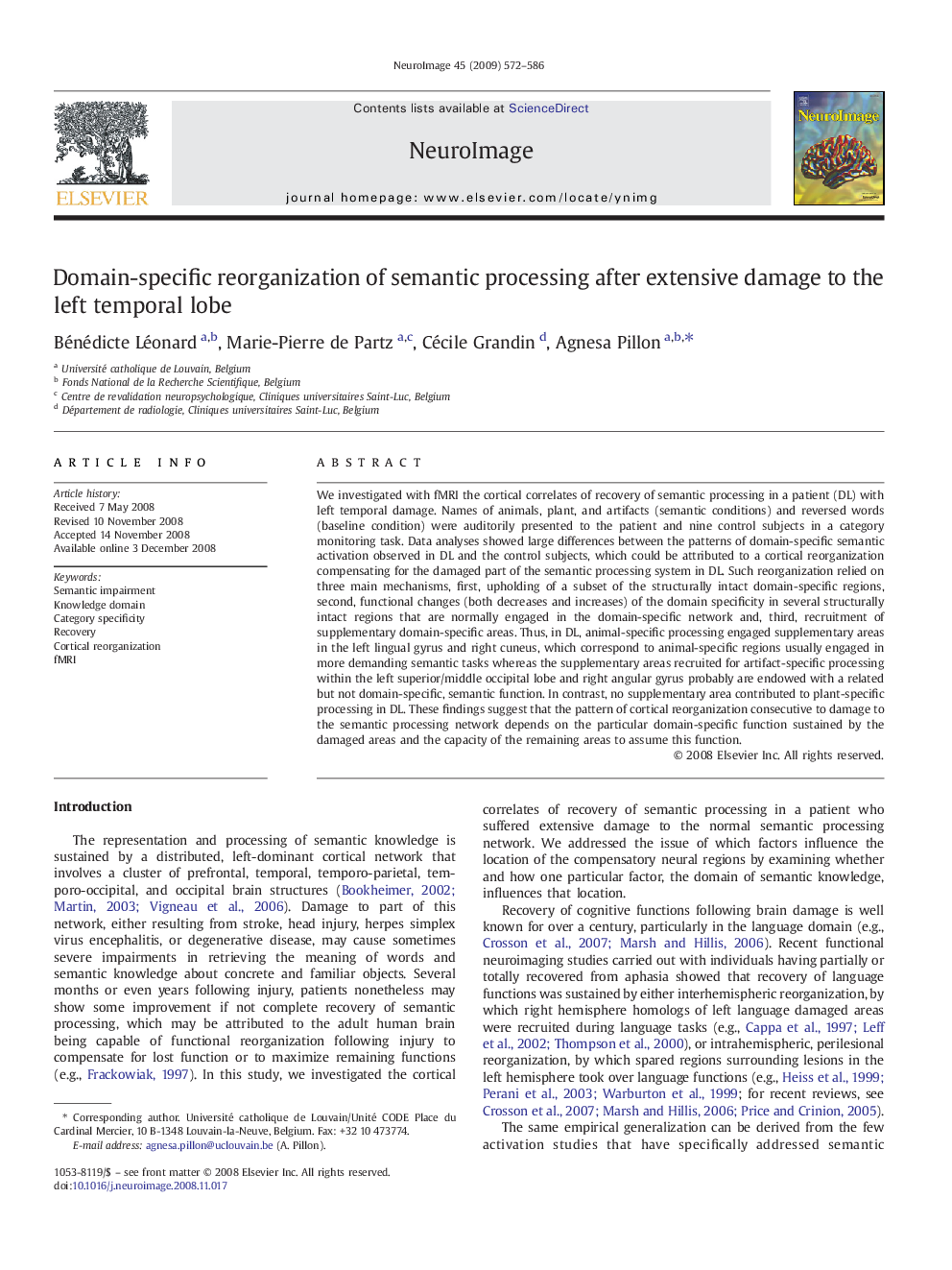| Article ID | Journal | Published Year | Pages | File Type |
|---|---|---|---|---|
| 6039290 | NeuroImage | 2009 | 15 Pages |
Abstract
We investigated with fMRI the cortical correlates of recovery of semantic processing in a patient (DL) with left temporal damage. Names of animals, plant, and artifacts (semantic conditions) and reversed words (baseline condition) were auditorily presented to the patient and nine control subjects in a category monitoring task. Data analyses showed large differences between the patterns of domain-specific semantic activation observed in DL and the control subjects, which could be attributed to a cortical reorganization compensating for the damaged part of the semantic processing system in DL. Such reorganization relied on three main mechanisms, first, upholding of a subset of the structurally intact domain-specific regions, second, functional changes (both decreases and increases) of the domain specificity in several structurally intact regions that are normally engaged in the domain-specific network and, third, recruitment of supplementary domain-specific areas. Thus, in DL, animal-specific processing engaged supplementary areas in the left lingual gyrus and right cuneus, which correspond to animal-specific regions usually engaged in more demanding semantic tasks whereas the supplementary areas recruited for artifact-specific processing within the left superior/middle occipital lobe and right angular gyrus probably are endowed with a related but not domain-specific, semantic function. In contrast, no supplementary area contributed to plant-specific processing in DL. These findings suggest that the pattern of cortical reorganization consecutive to damage to the semantic processing network depends on the particular domain-specific function sustained by the damaged areas and the capacity of the remaining areas to assume this function.
Related Topics
Life Sciences
Neuroscience
Cognitive Neuroscience
Authors
Bénédicte Léonard, Marie-Pierre de Partz, Cécile Grandin, Agnesa Pillon,
